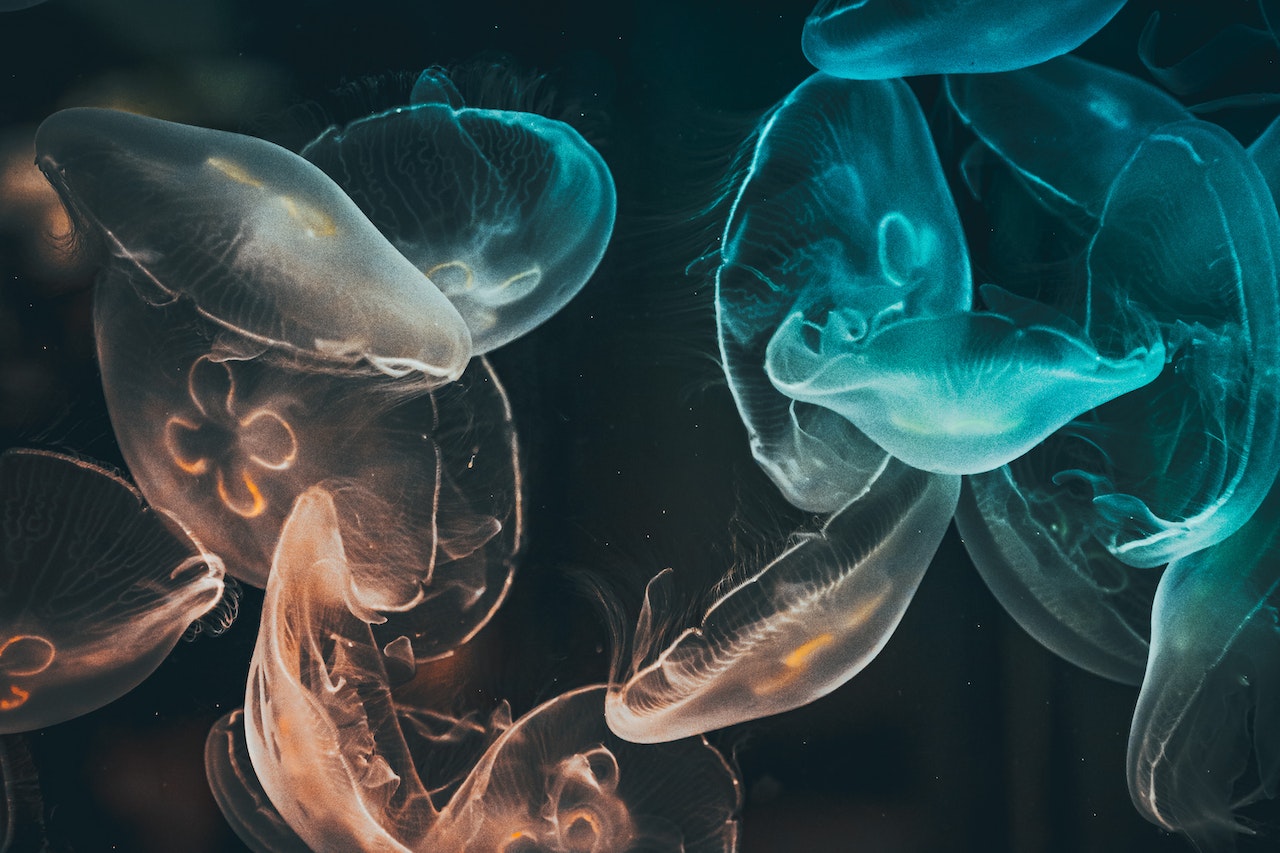Javea, a picturesque seaside town on Spain’s Costa Blanca, is celebrated for its stunning beaches, clear waters, and diverse marine life. Among this rich biodiversity, jellyfish are a common sight, ranging from harmless species to those that can pose a threat to beachgoers. Understanding the types of jellyfish in the area, their potential dangers, and how to respond to stings is crucial for ensuring a safe beach experience.
Also read: Beaches in Javea
Common Jellyfish in Javea
In the warm Mediterranean waters surrounding Javea, several species of jellyfish can be encountered. The Moon jellyfish (Aurelia aurita) is a common sight, easily recognized by its translucent body and four purple, horseshoe-shaped gonads visible in the center of its bell. While it can sting, its venom is generally harmless to humans, causing at most a mild irritation.
More concerning, however, is the presence of the Portuguese Man O’ War (Physalia physalis), also known as the “floating terror.” Despite its jellyfish-like appearance, it is actually a siphonophore – a colony of multiple organisms living together. Its long, trailing tentacles can deliver a painful sting, causing severe discomfort and, in rare cases, more serious health complications.
Safety Measures and Sting Treatment
During the warmer months, when jellyfish are more prevalent, it’s wise to check local jellyfish warnings before heading to the beach. Lifeguard posts and local news outlets often provide updates about current jellyfish conditions.
If you’re stung by a jellyfish, it’s crucial to respond appropriately. Remove any tentacles carefully with tweezers, avoiding direct contact with your hands. Rinse the area with seawater, and then hot water to alleviate the pain. Contrary to popular belief, vinegar or urine can make the sting worse, especially in the case of a Portuguese Man O’ War sting. Always seek medical help if symptoms persist or if the sting is extensive.
Conservation and Coexistence
While they can be dangerous, it’s important to remember that jellyfish are an essential part of the marine ecosystem. They provide food for a variety of species, including sea turtles and larger fish. Climate change and overfishing of their natural predators have led to an increase in jellyfish populations, which can lead to more frequent encounters with humans.
Javea and other local communities are engaging in initiatives to protect marine life and educate the public about safe and respectful coexistence. This includes providing up-to-date information about jellyfish sightings and safety measures.
Conclusion
Jellyfish are a fascinating part of Javea’s marine life. While certain species can pose a danger to beachgoers, understanding these creatures, respecting their space, and knowing how to respond to stings can ensure a safe and enjoyable beach experience. As we marvel at the biodiversity of Javea’s waters, let’s remember to do so responsibly, preserving this natural beauty for generations to come.


